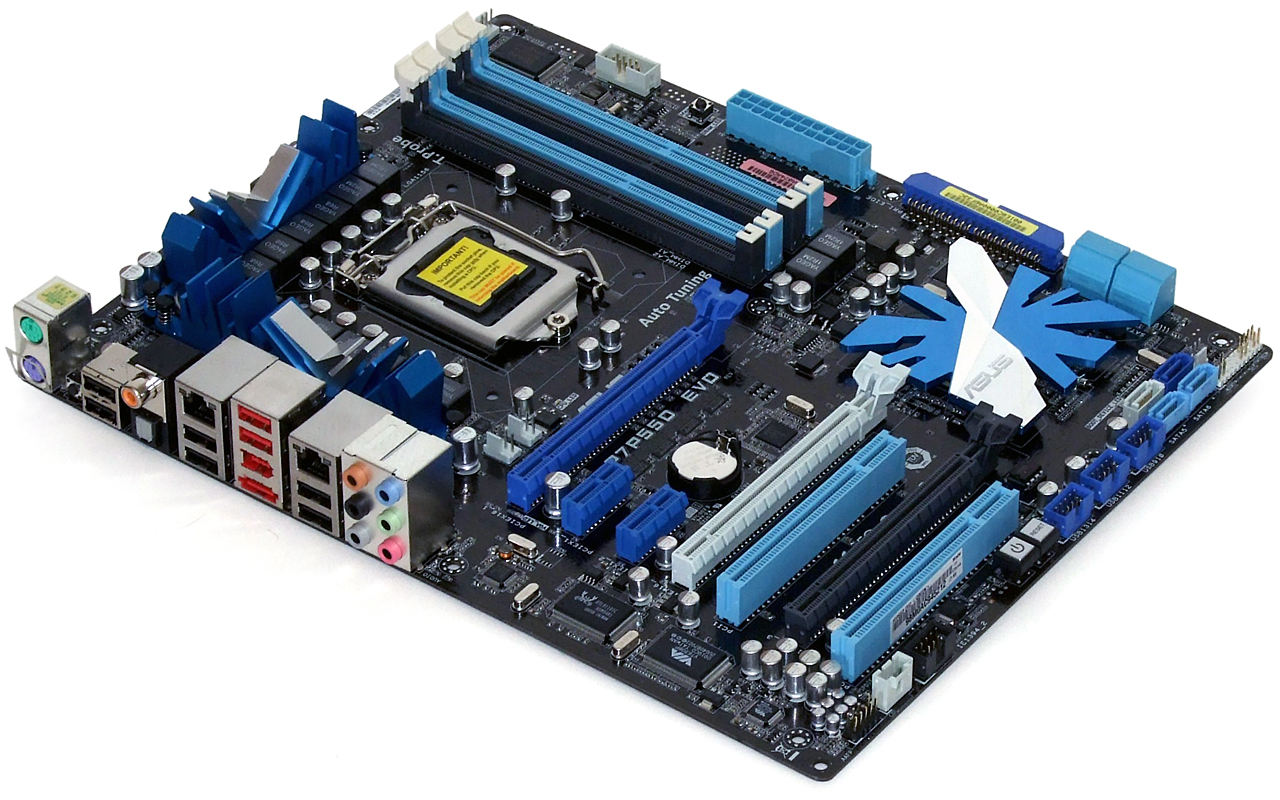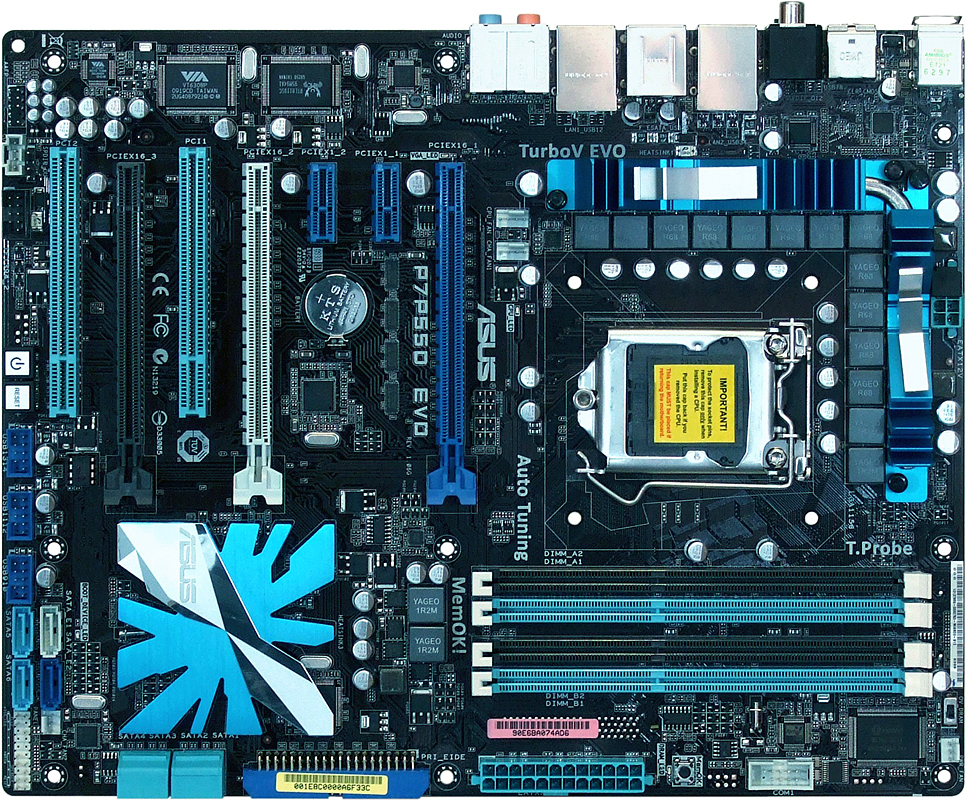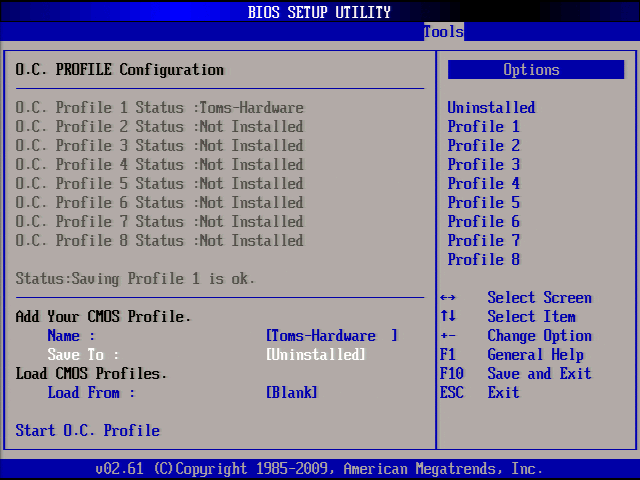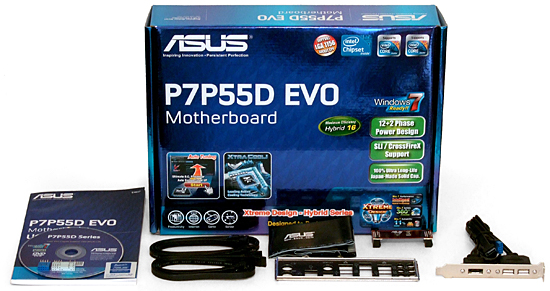Enthusiast P55: Eight LGA 1156 Boards Between $150 And $200
Asus P7P55D EVO
Though in many ways similar to the less-expensive P7P55D we reviewed a month ago, the P7P55D EVO offers a few extremely valuable features to attract gamers and power users. Chief among these are electronic switches that allow the second graphics card slot to function in x8 mode and dual-gigabit LAN with teaming support.
The EVO version also adds a coaxial connector for its digital audio output, a CLR_CMOS button on the I/O panel, a JMB322 multiplier for the internal port of its eSATA controller, and internal power/reset buttons. SATA headers are repositioned for easier installation of long graphics cards in the second x16-length slot, and the x16-length x4 slot of the budget version has been retained as a third slot on the P7P55D EVO.
Asus makes full use of seven slot positions by adding two PCIe x1 slots and two legacy PCI slots, placing its two high-bandwidth x16-length slots three spaces apart for improved cooling to the top graphics card. Found between the top two x16-length slots, four electronic switches instantly convert those slots from x16/x1 to x8/x8 modes whenever a long card is installed in that second slot. As with all P55 motherboards that have three long slots, interested 3-way SLI and CrossFire parties need to be aware that the third slot is suitable only for medium-bandwidth applications such as RAID cards, additional displays, or Nvidia graphics cards that have been re-purposed as PhysX processors.
Asus saw no need to upgrade the P7P55D EVO voltage regulator from the less-expensive version’s 14-phase design, and it also retains the cheaper board’s other exceptional features such as MemOK and Q-LED. MemOK eases booting with problematic RAM, while Q-LED indicates which component has become unresponsive during a failed boot attempt.
Asus also retains one of the nuisances from the less-expensive part--the bottom rear-corner FPA front-panel audio connector. We have to wish the best of luck to anyone who installs this motherboard into a case that has top-panel or upper-bay audio jacks.
Asus leaves out Windows XP RAID users by omitting any floppy connector, even though the feature is likely supported by the P7P55D EVO’s multi-I/O controller. Yet, the EVO panders to the legacy-storage crowd with an Ultra ATA connection.
BIOS
Get Tom's Hardware's best news and in-depth reviews, straight to your inbox.
Asus' Ai Tweaker menu offers a wide range of voltage and frequency settings across two pages. In addition to required overclocking parameters, advanced overclockers will welcome signal amplitude, clock skew, and DRAM-reference voltage settings.
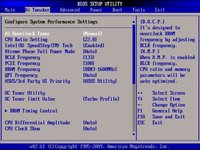
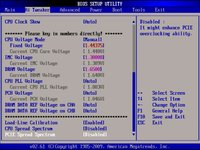
Asus' OC Tuner utility allows the system to automatically tune its own overclock. The highest Turbo profile pushed our CPU base clock to 161 MHz, but fortunately kept the processor’s Turbo mode operational.
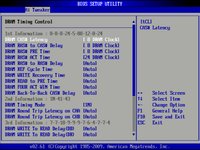
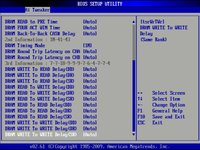
DRAM timings consume almost two pages in a separate submenu. Asus allows users to configure only those settings with which they are familiar and to leave others in automatic mode.
Asus OC Profile stores up to eight custom settings onboard or exports these profiles to an external drive.
Accessories
The P7P55D EVO includes four SATA cables, though it tops the basic P7P55D by adding an SLI bridge and an eSATA/USB breakout plate.
